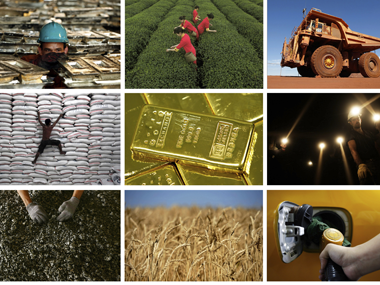By Sagar Kanade
The Government of India published the Economic Survey for 2012-13 on 27 February 2013, which serves as a base for the Union Budget for 2013-14, to be presented by the Finance Minister on 28 February. This survey highlights the weak state of the economy and also the short-term prospects in light of various reforms announced during the financial year 2012-13.
The government has rightly acknowledged the recent slowdown in India’s GDP growth with meager growth rates of 5.5 percent and 5.3 percent in the first two quarters of 2012-13. This slowdown has been across all the sectors, with industry and the manufacturing being the worst performer.
The fact that 2009-10 and 2010-11 experienced high growth rates, primarily on account of the strong post-financial-crisis stimulus, makes the current estimate of 5 percent growth in 2012-13 look worse.
[caption id=“attachment_642693” align=“alignleft” width=“380”] The survey has done well in fairly outlining the challenging state of the economy with expected growth of 6.1 percent to 6.7 percent in the coming fiscal year[/caption]
The survey has acknowledged that this slowdown is mainly on account of domestic factors like infrastructure bottlenecks slowing corporate investments and poor performance of agriculture sector with a weak monsoon as well as showing global economy resulting in weaker external demand.
The high level of inflation in recent years seems to have affected Private Consumption, with reduction in real disposable income of household. Also, the private sector investments have dropped sharply during the recent years on account of increased borrowing costs, lower external demand and policy bottlenecks like difficulties in land acquisition, coal linkages and mining bans.
Even if the government is unable to control the external demand, it is very important for the government to get rid of the structural impediments and induce more investments in order to enhance growth prospects.
What is also important is to encourage ‘productive’ investments unlike investments in the form of valuables like precious metals, jewelry etc.
A dampening and uncertain global economic environment hasn’t helped either. With sharp decline in net exports, the balance of payment has come under pressure.
The widening current account deficit is largely offset by the capital account as well as volatile natured foreign fund inflows such as FIIs, NRI deposits and trade credits etc.
Highest ever CAD of 5.4 percent in the second quarter of 2012-13, being funded with capital funds is certainly something the government needs to address by inducing more exports and taming the imports of gold and oil.
As 2012-13 experienced drops in the levels of private consumption, investment and net exports, only the government spending remained an option to push the economic growth.
This put further pressure on already shot up government deficit. Similar to 2011-12, when the budgeted fiscal deficit of 4.8 percent actually fared at 5.7 percent, the fiscal deficit target for 2012-13 also looks unlikely to be achieved with lower tax collections and burgeoning expenditure outgo.
The government was able to achieve fiscal surplus in December 2012 by controlling the expenditure. However, expenditure restraints need to continue with focus on containing subsidies, if the fiscal consolidation plan to achieve 3 percent of fiscal deficit is to be attained by 2017.
The survey noted that inflation has been coming down in recent months. Indeed wholesale price index (WPI) moderated to a three-year low of 6.62% in January 2013. However, food inflation, after a brief slowdown, continues to be higher than overall inflation and remains a point of concern as rightly highlighted by the economic survey.
Whereas reducing inflation may give some space for the RBI to ease the tight monetary policy, the government can reduce the fiscal impetus to demand and incentivise better food production and management in order to control resurfacing of high inflation levels.
Other than above macroeconomic aspects, it is good to see that the Economic Survey also discussed the improved gross capital formation and technological advancements in agriculture as well as improvements required in agricultural yields.
Similar to the Twelfth Plan’s focus on ’environmental sustainability’, it highlights the importance of protecting equity, fair burden sharing and equitable access to global atmospheric resources.
To sum up, the survey has done well in fairly outlining the challenging state of the economy with expected growth of 6.1 percent to 6.7 percent in the coming fiscal year.
Further on the part of government action, it underlines the need of shifting national spending from consumption to investment and removal of impediments in increasing further investments, savings and job creation.
It remains to be seen how the finance minister, through the Union Budget for 2013-14, support the steps already being taken to bring the economic growth back on track.
Sagar Kanade is a manager with Deloitte Haskins & Sells


)
)
)
)
)
)
)
)
)



